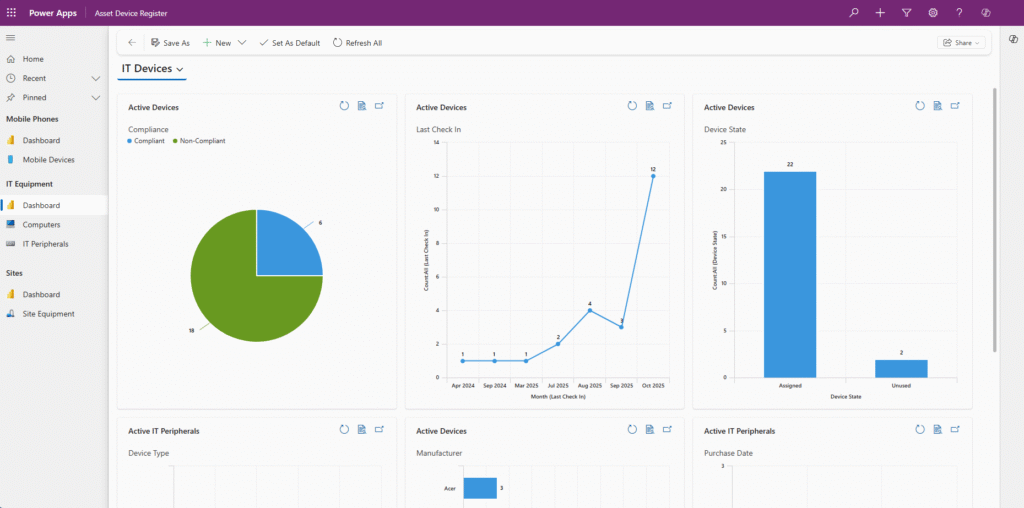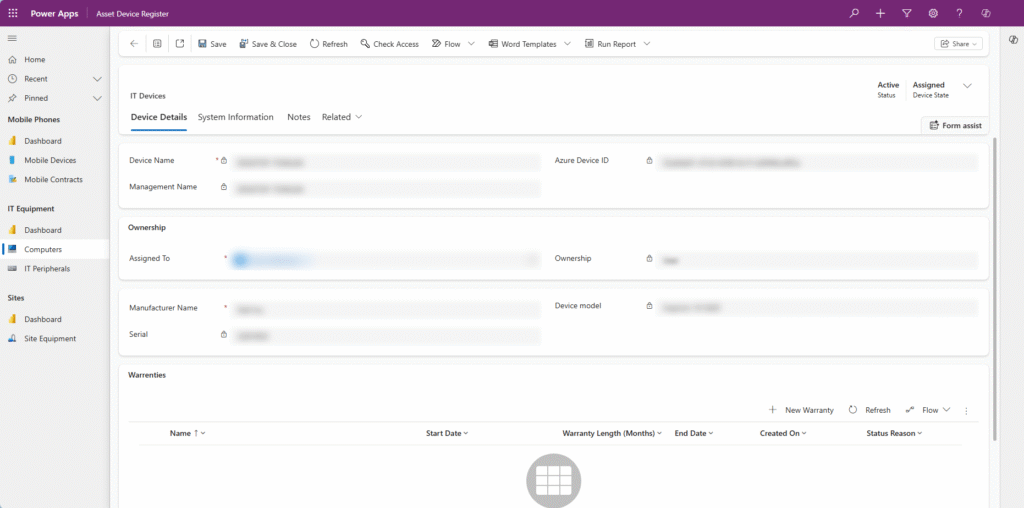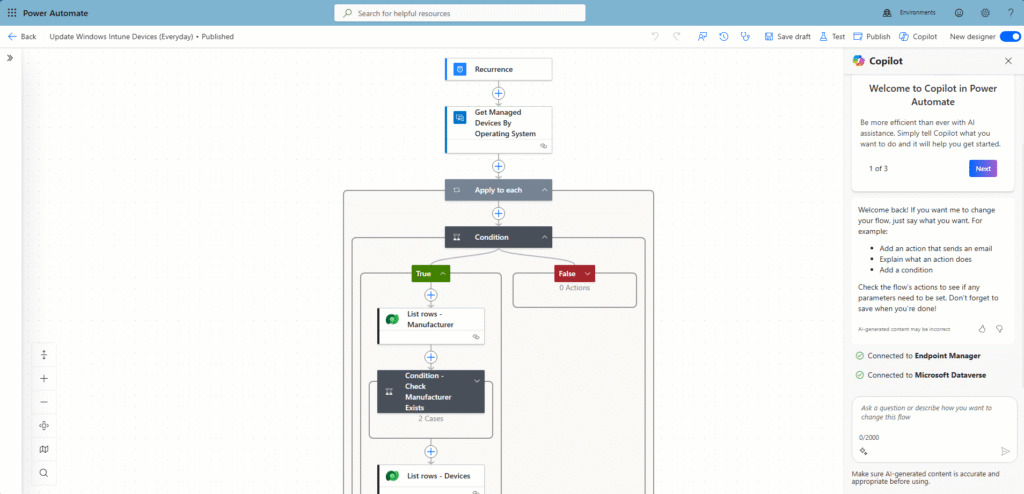The Challenge
Historically, the company relied on Microsoft Intune to track mobile devices and laptops, while maintaining a separate asset register in Excel for managing equipment.
As part of their process, they manually added devices from Intune to their asset register to ensure consistency. However, this approach had significant inefficiencies. Information had to be updated in two different locations, leading to duplication of effort and an increased risk of discrepancies. There was no centralised system to store and manage all asset-related data in one place. Additionally, the company maintained a separate database for PAT testing records. Due to human error, PAT tests were occasionally overlooked, or employees had to manually cross-check Excel to determine when a device was due for renewal—an extra step that made compliance harder to maintain.
Pain Points
- Manual syncing between Intune and Excel led to duplication and data inconsistencies.
- No centralised system for managing all asset-related data.
- PAT testing records were stored separately, increasing the risk of missed inspections.
- Employees had to manually cross-check Excel for PAT test schedules, adding complexity.
- Human error in manual processes made compliance difficult to maintain.
Business Impact
- Centralised asset management using Dataverse improved data accuracy and visibility.
- Graph API integration automated syncing from Intune, eliminating manual entry errors.
- Automated PAT testing reminders ensured timely compliance and reduced oversight risk.
- Dynamic dashboards provided real-time insights into asset status and testing schedules.
- Streamlined processes reduced workload and allowed focus on strategic initiatives.
Our Solution
To overcome the inefficiencies of their previous asset management system, the company introduced a model-driven app built on Microsoft Dataverse. This provided a centralised platform where all asset-related data including device tracking, equipment records, and PAT testing schedules could be stored, accessed, and updated seamlessly.
The model-driven app offered an intuitive interface with dynamic dashboards and interactive graphs, allowing users to easily monitor device status and upcoming PAT test requirements. By leveraging built-in automation and workflow rules, the system ensured updates were made consistently, reducing the need for manual intervention.
To maintain accurate records and eliminate data duplication, the company integrated Microsoft Graph API to sync asset information directly from Microsoft Intune into Dataverse. This automated data retrieval eliminated manual entry errors and kept the asset register continuously up to date. Additionally, notifications and automated workflows played a crucial role in ensuring timely PAT testing compliance. The system triggered reminders for upcoming renewals, reducing the likelihood of missed inspections. Employees could also receive alerts for critical asset changes, making collaboration more efficient and proactive. By harnessing the power of a model-driven app, Dataverse, and Graph API, the company successfully built a streamlined asset management solution that improved accuracy, reduced workload, and enhanced operational transparency.



Technology Stack

Model-Driven App
User Interface

Power Automate
Workflow Automation

SharePoint
Document Storage







